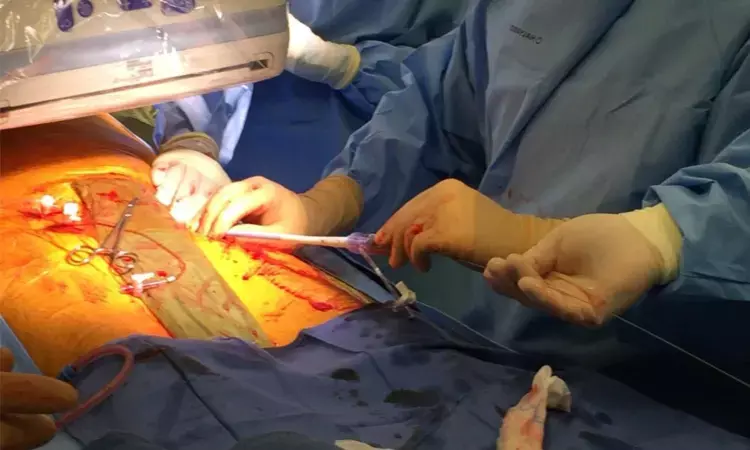- Home
- Medical news & Guidelines
- Anesthesiology
- Cardiology and CTVS
- Critical Care
- Dentistry
- Dermatology
- Diabetes and Endocrinology
- ENT
- Gastroenterology
- Medicine
- Nephrology
- Neurology
- Obstretics-Gynaecology
- Oncology
- Ophthalmology
- Orthopaedics
- Pediatrics-Neonatology
- Psychiatry
- Pulmonology
- Radiology
- Surgery
- Urology
- Laboratory Medicine
- Diet
- Nursing
- Paramedical
- Physiotherapy
- Health news
- Fact Check
- Bone Health Fact Check
- Brain Health Fact Check
- Cancer Related Fact Check
- Child Care Fact Check
- Dental and oral health fact check
- Diabetes and metabolic health fact check
- Diet and Nutrition Fact Check
- Eye and ENT Care Fact Check
- Fitness fact check
- Gut health fact check
- Heart health fact check
- Kidney health fact check
- Medical education fact check
- Men's health fact check
- Respiratory fact check
- Skin and hair care fact check
- Vaccine and Immunization fact check
- Women's health fact check
- AYUSH
- State News
- Andaman and Nicobar Islands
- Andhra Pradesh
- Arunachal Pradesh
- Assam
- Bihar
- Chandigarh
- Chattisgarh
- Dadra and Nagar Haveli
- Daman and Diu
- Delhi
- Goa
- Gujarat
- Haryana
- Himachal Pradesh
- Jammu & Kashmir
- Jharkhand
- Karnataka
- Kerala
- Ladakh
- Lakshadweep
- Madhya Pradesh
- Maharashtra
- Manipur
- Meghalaya
- Mizoram
- Nagaland
- Odisha
- Puducherry
- Punjab
- Rajasthan
- Sikkim
- Tamil Nadu
- Telangana
- Tripura
- Uttar Pradesh
- Uttrakhand
- West Bengal
- Medical Education
- Industry
TAVR in Bicuspid Aortic Valve: Balloon versus Self-Expanding Valves Show Comparable 3-Year Outcomes, Study Shows

Italy: In patients with bicuspid aortic valve (BAV) stenosis undergoing transcatheter aortic valve replacement (TAVR), long-term rates of death or stroke appear similar whether balloon-expandable (BE-THV) or self-expanding (SE-THV) prostheses are used, according to a large registry analysis published in Circulation.
- No significant difference was observed in the composite endpoint of death or stroke between balloon-expandable (BE-THV) and self-expanding transcatheter heart valves (SE-THV) after propensity score matching and adjustment for confounders.
- In-hospital and 30-day event rates were 5.1% for BE-THV and 6.1% for SE-THV (HR 1.02).
- At three years, mortality or stroke occurred in 23.7% of the BE-THV group and 26.2% of the SE-THV group (HR 0.99).
- These findings remained consistent across subgroups and statistical models, including inverse probability weighting and multivariable adjustment.
- Balloon-expandable valves were associated with a higher mean transvalvular gradient and an increased risk of annulus rupture.
- Self-expanding valves had a higher incidence of moderate-to-severe paravalvular regurgitation, need for additional valve implantation, and permanent pacemaker insertion.
- Pacemaker implantation within 30 days was significantly lower in the BE-THV group compared to SE-THV (11.9% vs. 18.6%; HR 0.58).
Dr Kamal Kant Kohli-MBBS, DTCD- a chest specialist with more than 30 years of practice and a flair for writing clinical articles, Dr Kamal Kant Kohli joined Medical Dialogues as a Chief Editor of Medical News. Besides writing articles, as an editor, he proofreads and verifies all the medical content published on Medical Dialogues including those coming from journals, studies,medical conferences,guidelines etc. Email: drkohli@medicaldialogues.in. Contact no. 011-43720751


